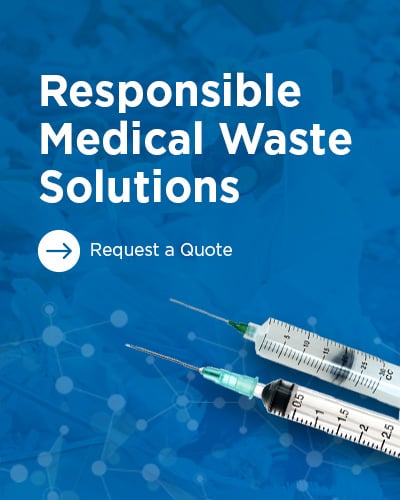
There’s a growing gap in how patients are supported after their prescriptions are filled. And the issue is only getting bigger as injectable medications become more common, especially for chronic conditions like diabetes, obesity, autoimmune disorders, and fertility treatments. While telehealth and online pharmacies have made access to these medications easier than ever, one crucial piece of the puzzle is still being overlooked: safe and sustainable sharps disposal.
The Hidden Burden on Patients
For many patients, starting injections at home is a major step in their health journey. But too often, once the medication arrives, they’re left with a big question: What do I do with the used needles or pens?
Shockingly, a large number of patients report getting no guidance from their providers or insurance companies on how to dispose of sharps. Some are forced to search online; others resort to unsafe methods, like tossing used needles into household trash, simply because they weren’t told there was another option.
In fact, nearly 14% of diabetic patients admit to disposing of sharps in the trash, and over one-third of insulin users say they don’t use a proper sharps container at all¹. This isn’t just a patient problem. It’s a public health issue that exposes sanitation workers, family members, and the environment to real risks.
A Better Way Forward: Sharps Disposal from Day One
Some programs are beginning to set a better standard: patients receive a safe sharps container right alongside their first prescription, along with clear instructions for how to use it and how to send it back when full. For patients, this kind of all-in-one approach can make a world of difference.
In fact, several pharmaceutical companies that have implemented sharps disposal programs as part of their patient support initiatives report overwhelmingly positive results. These programs not only help patients feel more prepared and supported from the start, but they also contribute to higher satisfaction scores and improved adherence to treatment protocols. When patients aren’t left to figure out disposal on their own, they’re more likely to stay consistent with their medication, complete their treatment cycles, and stay engaged in their care without the added burden of figuring out logistics on their own.
These early interventions are especially critical for patients starting injectable therapies for the first time. Offering a disposal solution upfront communicates that their experience matters and that their safety, and the safety of others, has been thoughtfully considered.
Unfortunately, these programs are still an exception, not the norm.
Time for Payers and Providers to Step Up
This is where insurance companies, telehealth providers, and virtual pharmacies have a real opportunity to lead. By integrating safe sharps disposal solutions into their patient care models, they can support better outcomes, reduce environmental harm, and prevent unsafe practices before they start.
We encourage patients to advocate for themselves: if you're injecting at home and haven’t received a sharps container, ask your medication provider or telehealth company if they offer one or urge them to start.
A Trusted Solution
Companies like PureWay offer nationwide mail-back sharps disposal systems designed specifically for at-home injectors. These systems are eco-friendly, compliant with federal regulations, and easy to use. Helping ensure that patients can dispose of sharps responsibly and safely, without added hassle.
PureWay also partners with organizations to create customized sharps disposal programs that can be seamlessly integrated into patient care models. These programs are ideal for telehealth providers, pharmaceutical brands, or insurance groups looking to support patient safety and environmental responsibility from day one.
As the healthcare industry continues to evolve, it's time for sharps disposal to be part of the conversation—not an afterthought.
Sources:
- Disposal Practices of Used Insulin Syringes and Needles by Diabetic Patients in the Community. National Library of Medicine. https://www.ncbi.nlm.nih.gov/pmc/articles/PMC6231325
- Community-Based Sharps Disposal Practices. Journal of Diabetes Science and Technology. https://journals.sagepub.com/doi/full/10.1177/193229681000400509





